 Technology peripherals
Technology peripherals
 AI
AI
 Intel Core 14th generation processor i7-14700K first review: AI overclocking, unmatched performance
Intel Core 14th generation processor i7-14700K first review: AI overclocking, unmatched performance
Intel Core 14th generation processor i7-14700K first review: AI overclocking, unmatched performance
On October 17, Intel launched its 14th generation Core S series processors. Friends who have noticed must have noticed that there are some changes in the naming this time: more emphasis on Core. This will also be the last time that "X-generation Core" is used, and it will be named "X-generation Core Ultra" from now on.
We are also non-stop evaluating the new generation of processors. Taking into account the widespread purchase by the public and the support of wallets, we selected the high-end product of Intel Core 14th generation i7-14700K for evaluation. The initial selling price is 3,499 yuan.

As the saying goes, a good horse deserves a good saddle, and a powerful CPU must be paired with an excellent motherboard to make the best use of it. For the motherboard, we chose ASUS’s latest ROG MAXIMUS Z790 DARK HERO, which is very cool and beautiful. The price is 5399 yuan.
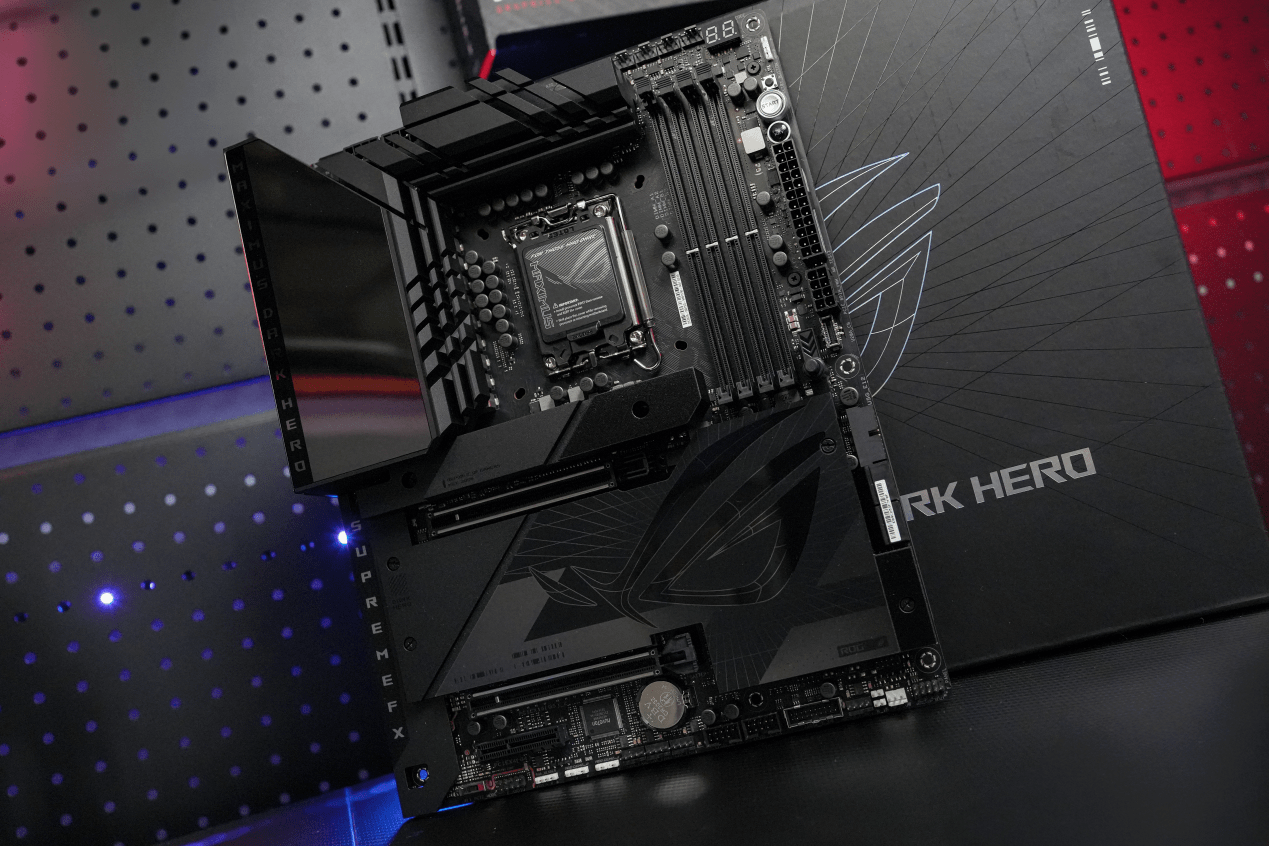
Parameter information:
Intel Core 14th generation i7-14700K processor, 10nm process technology, 8 large cores, 12 small cores, 28 threads, L2 cache 16 12MB, L3 cache 33MB, maximum turbo frequency 5.6GHz, maximum core frequency Frequency power consumption is 253W. Compared with last year's i7-13700K, four small cores have been added, the second-level cache has increased by 4MB, and the third-level cache has increased by 3MB.
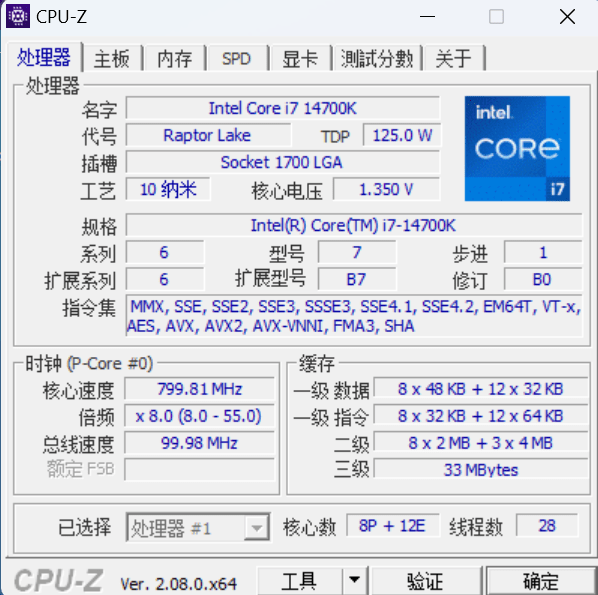
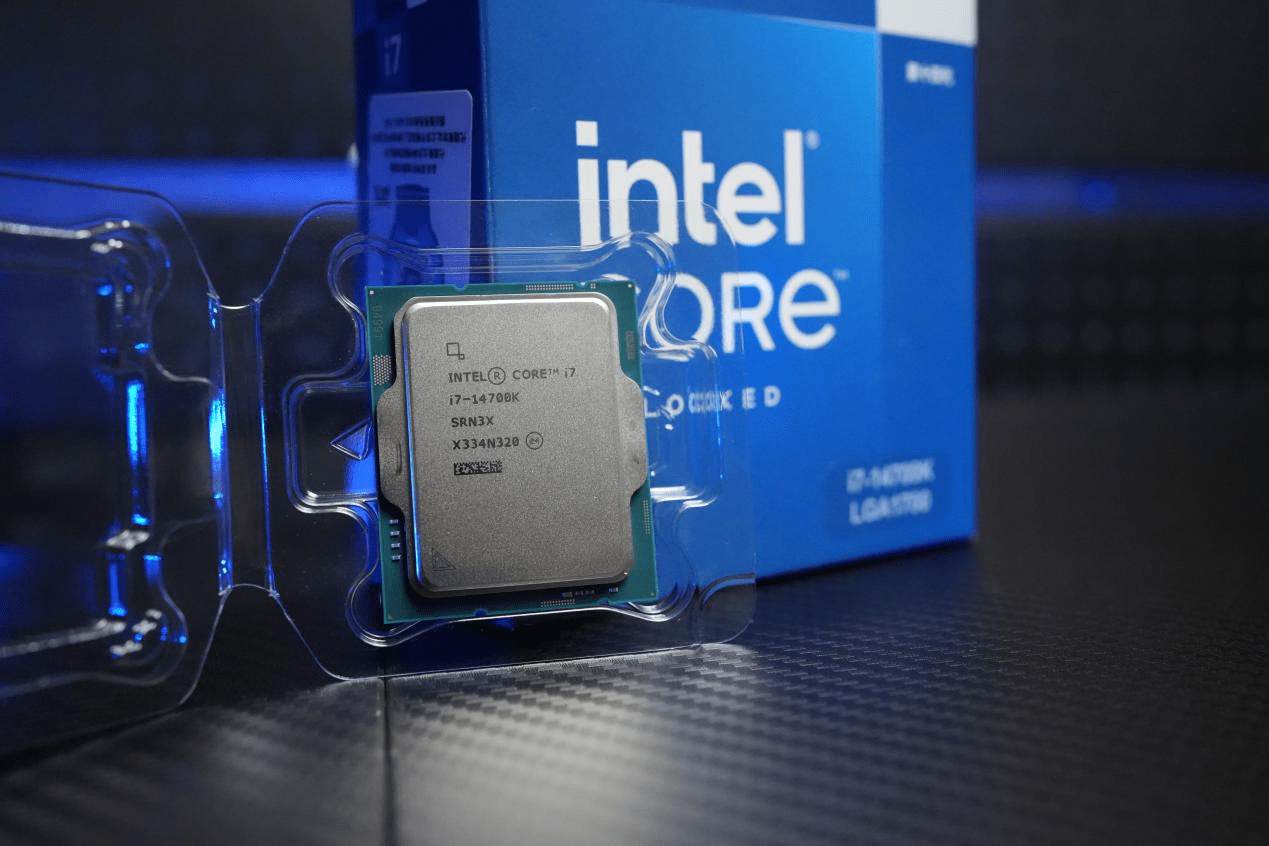
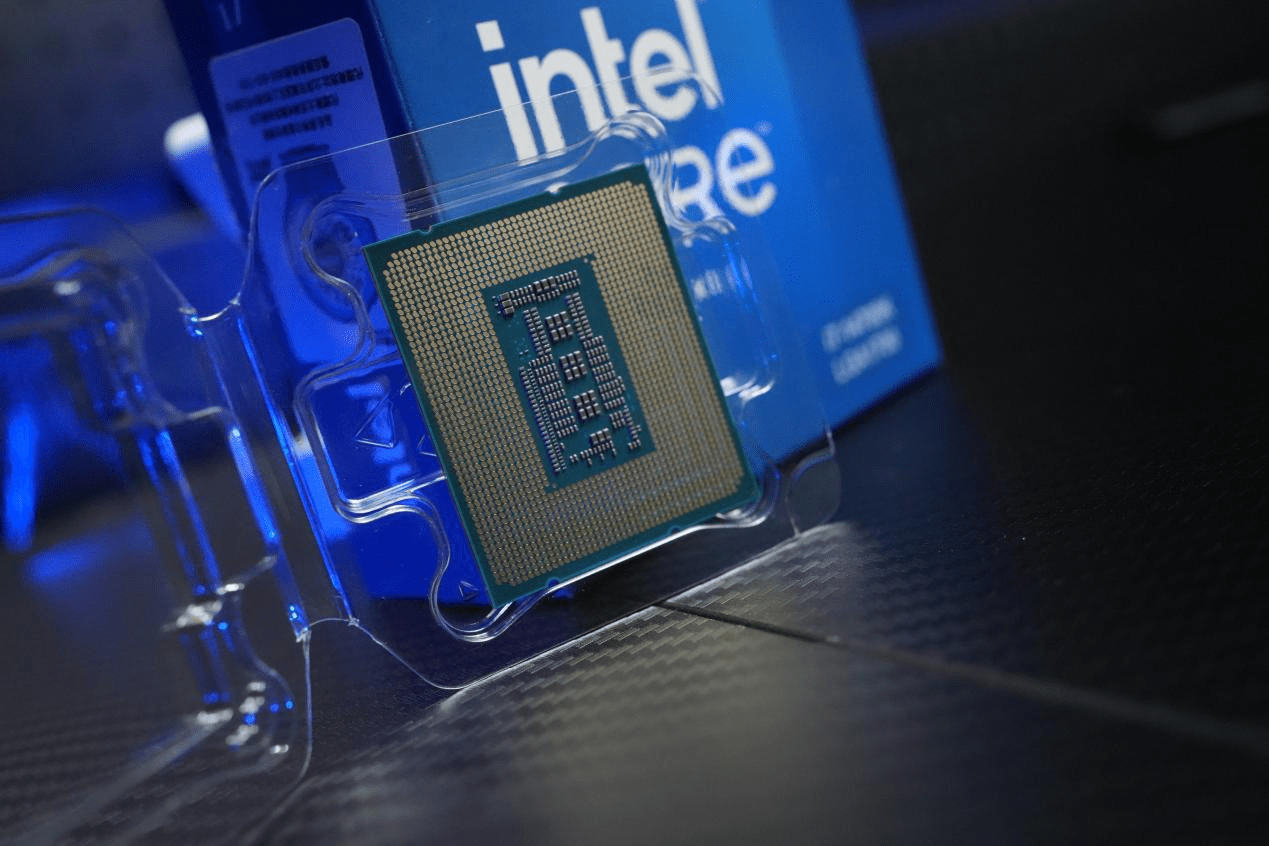
The most outstanding thing about the 14th generation Core processor is that it provides an excellent overclocking experience. You can turn on one-click overclocking in XTU, which simplifies the operation and can be achieved with just one click. There is no need to worry about the voltage being too high after manual control. A breakdown in hosting occurs. You can also manually change XMP, with speeds up to over 8000MT/s, and the latest single-core heat dissipation control tools to ensure the highest performance when overclocked.
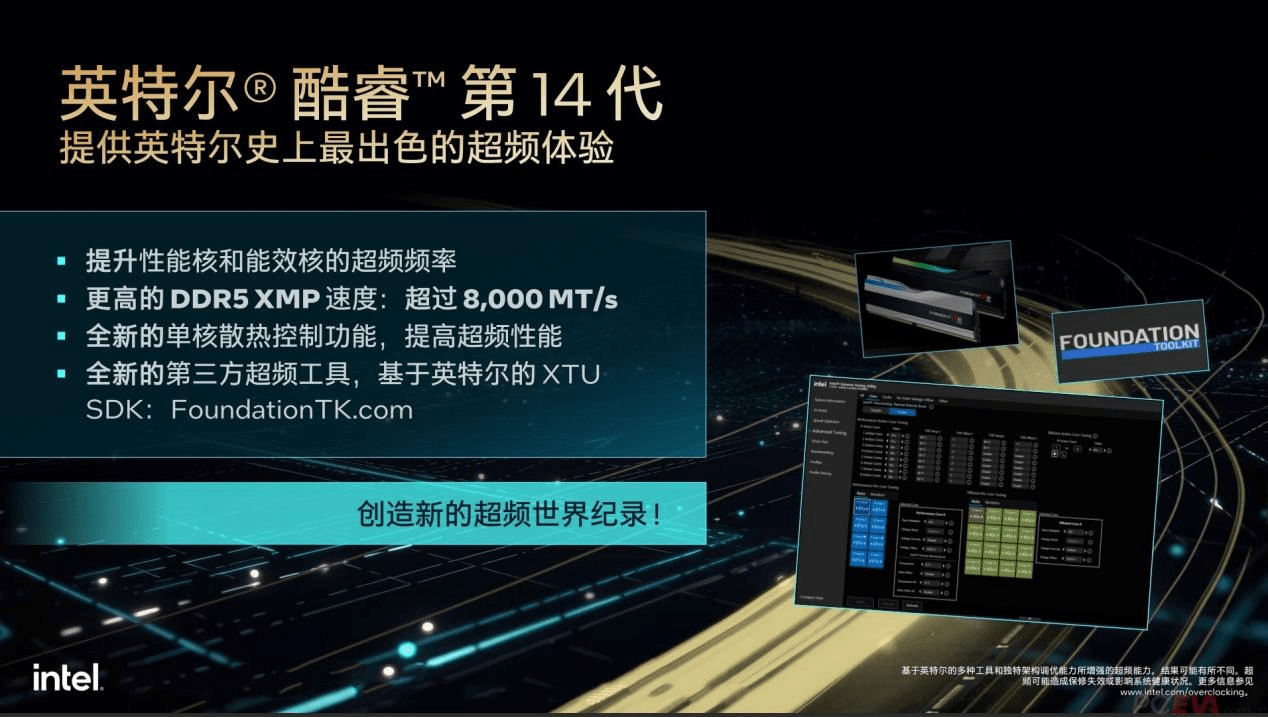
The 14th generation Core processor also adds the Intel Application Optimizer to the dynamic tuning technology framework, which guides application resource allocation to optimize game software by optimizing thread scheduling. Rainbow Six Siege and Metro Exodus were the first games to take advantage of the software. After use, the performance increased by 13% and 16% respectively. We also believe that more games will perform better with the help of this software in the near future.
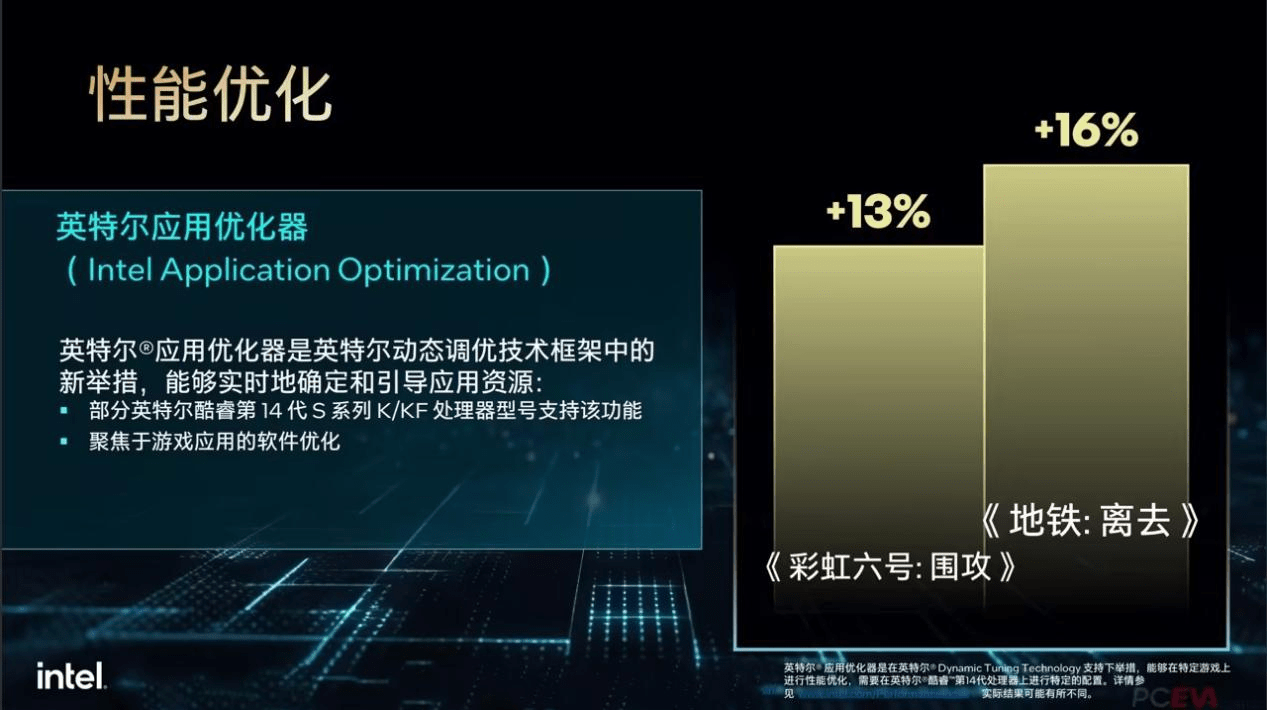
software test:
After reading the parameters of this CPU, I believe everyone is already well aware of the highlights and advantages of the 14th generation Core processor. Before setting up the test environment, let’s take a look at ASUS’s ROG MAXIMUS Z790 DARK HERO motherboard. It is also the latest product.
In terms of appearance, it uses ATX architecture and uses black as the main color. The first thing that catches the eye is the Prodigal Eye logo on the chip cooling module. There is also a mirror screen on the left side. After the power is turned on, the light will turn on and the ROG logo will appear.
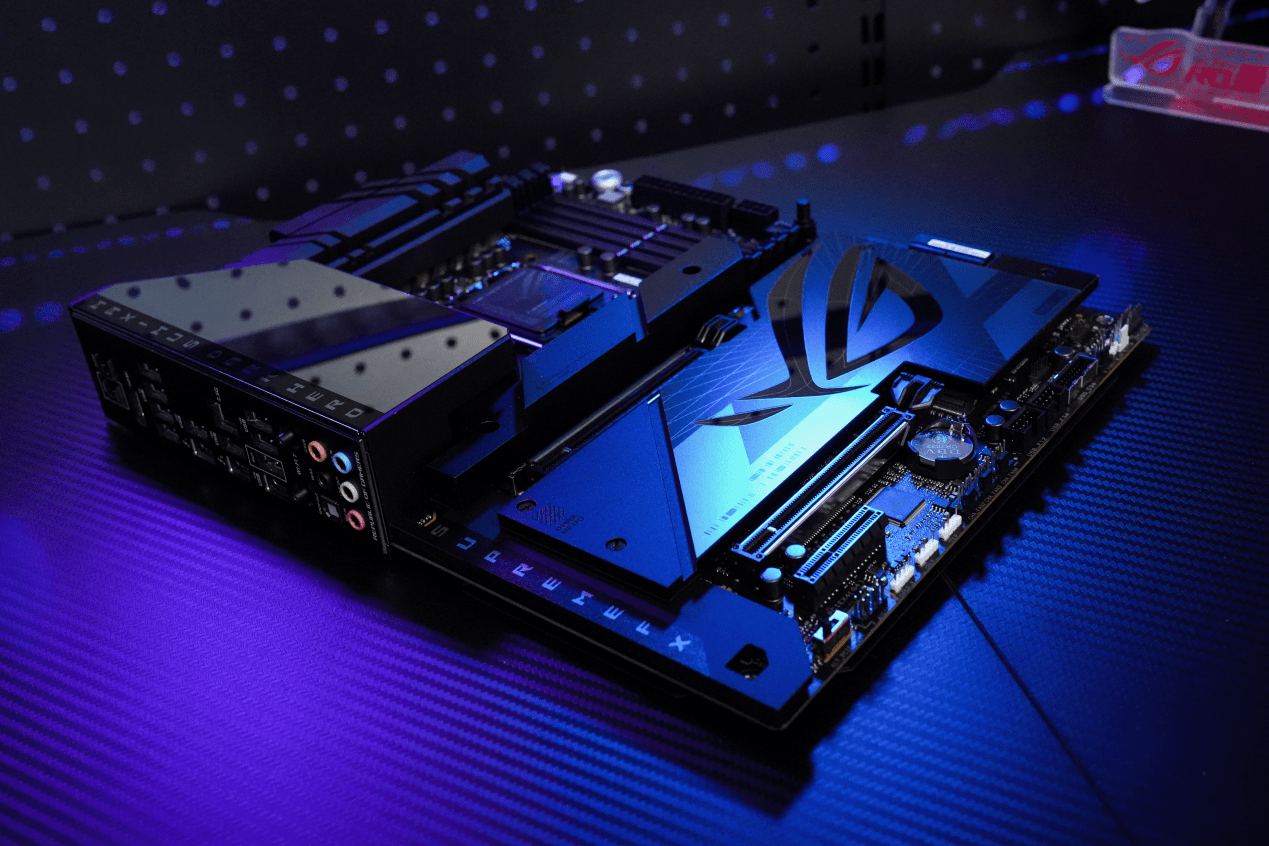
The motherboard’s power supply uses 21 phases, surrounding the periphery of the CPU. The power supply of the CPU adopts dual 8pin interfaces, which are fully covered with heat dissipation armor.
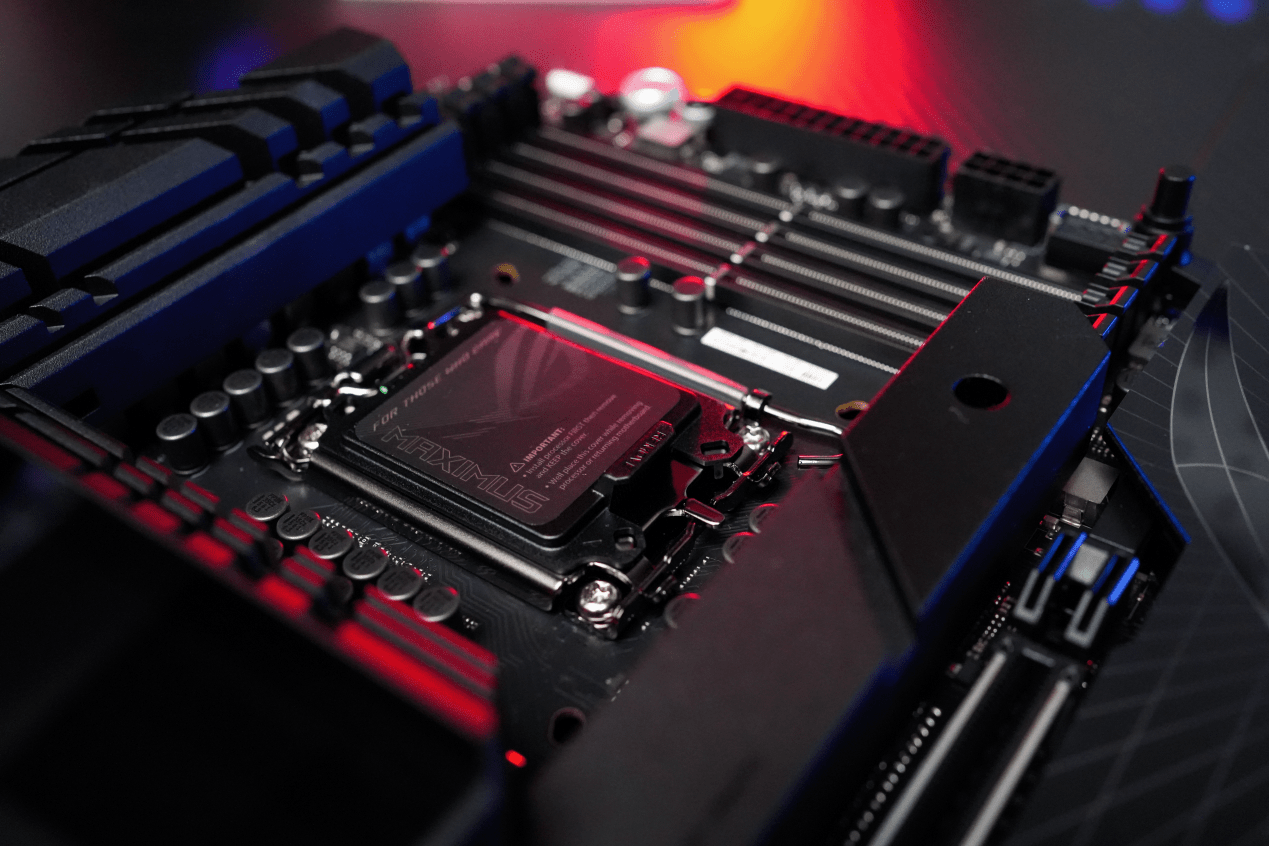
In terms of memory, it supports DDR5, has four memory slots, supports dual channels, up to 48GB per slot, and up to 192GB overall, and supports AEMPⅡ. There are also two PCIe X16 graphics card slots, which are metal reinforced.
In terms of solid-state drives, there are five NVME M.2 slots, one supports PCIe 5.0 and two PCIe 5.0 x16.
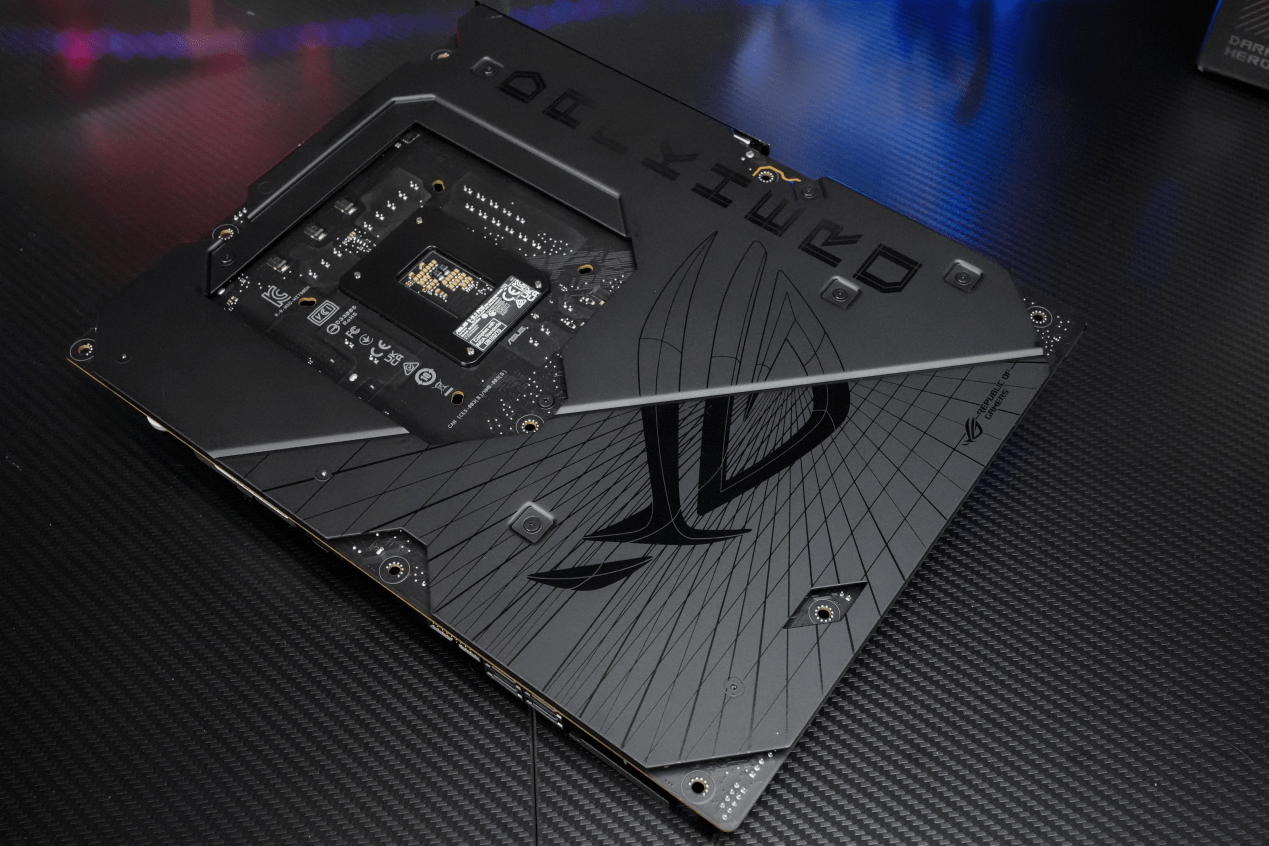
The I/O panel also has a unique design. The upper one clears the CMOS button and the other refreshes the BIOS case. One HDMI interface, four USB3.1 interfaces, two USB3.2Gen 1 TYPE-A interfaces, two Thunderbolt 4 interfaces, one 2.5G wired network card interface, three USB 3.2 Gen 2 TYPE-A interfaces, one USB 3.2 Gen 2 TYPE-C interface. There is also a set of high-definition audio interfaces and a set of WIFI7 antenna interfaces below. There is an antenna in the accessory bag, which is plugged into these two ports.
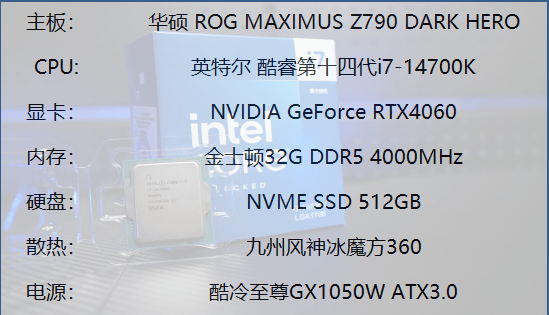
This is the test environment we built, using RTX4060 graphics card, Ice Cube 360 for better heat dissipation, and the operating system is WIN11.
First the benchmark test, we used CPU-Z, CineBench R23, CrossMark, 3DMark CPU Profile, 3DMark Fire Strike, and 3DMark Time Spy.
The CPU-Z benchmark test can measure the core internal frequency and memory frequency in real time, and detect the CPU working status, temperature and stability. We chose to compare with the i9-13900K. Compared with last year's i9 flagship processor, this year's i7-14700 has reached the level of i9 in single-core, but is slightly inferior in multi-core, only 84%.
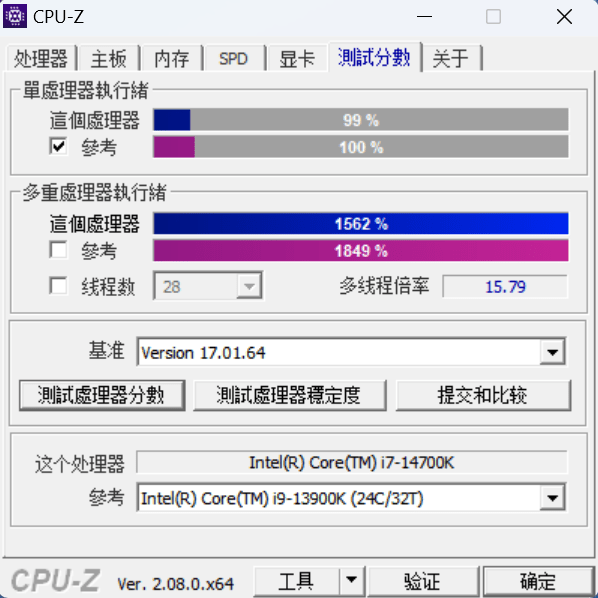
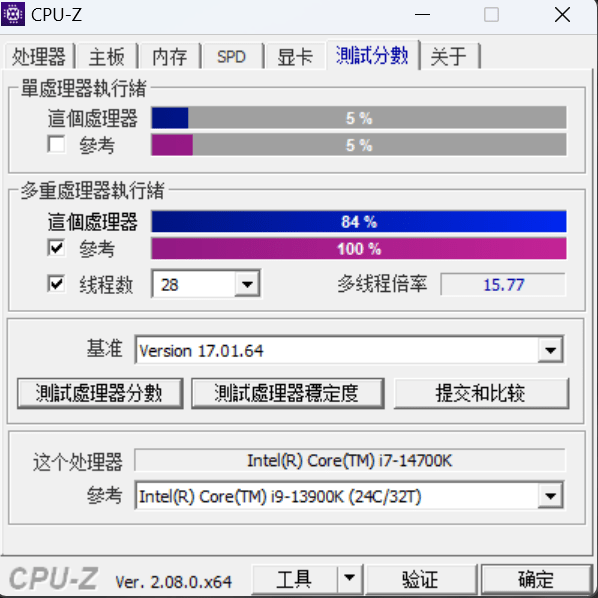
Use CineBench23 for running scores, which is the ultimate tool for comprehensively evaluating computer performance. Developed by Maxon, it is a benchmark software used to test the performance of computer processors and graphics processors. The multi-core score is 31866 and the single-core score is 2143.
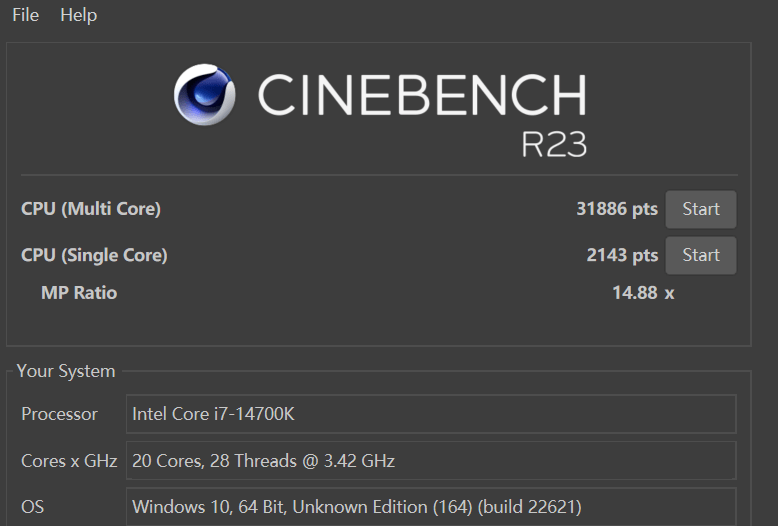
CrossMark mainly reflects daily tasks, such as web browsing, document editing, and creation-related tasks such as photo and video editing, into the actual daily use environment to give fair scores. The overall score was 2153, with a productivity score of 2072, a creativity score of 2260, and a responsiveness score of 2074.
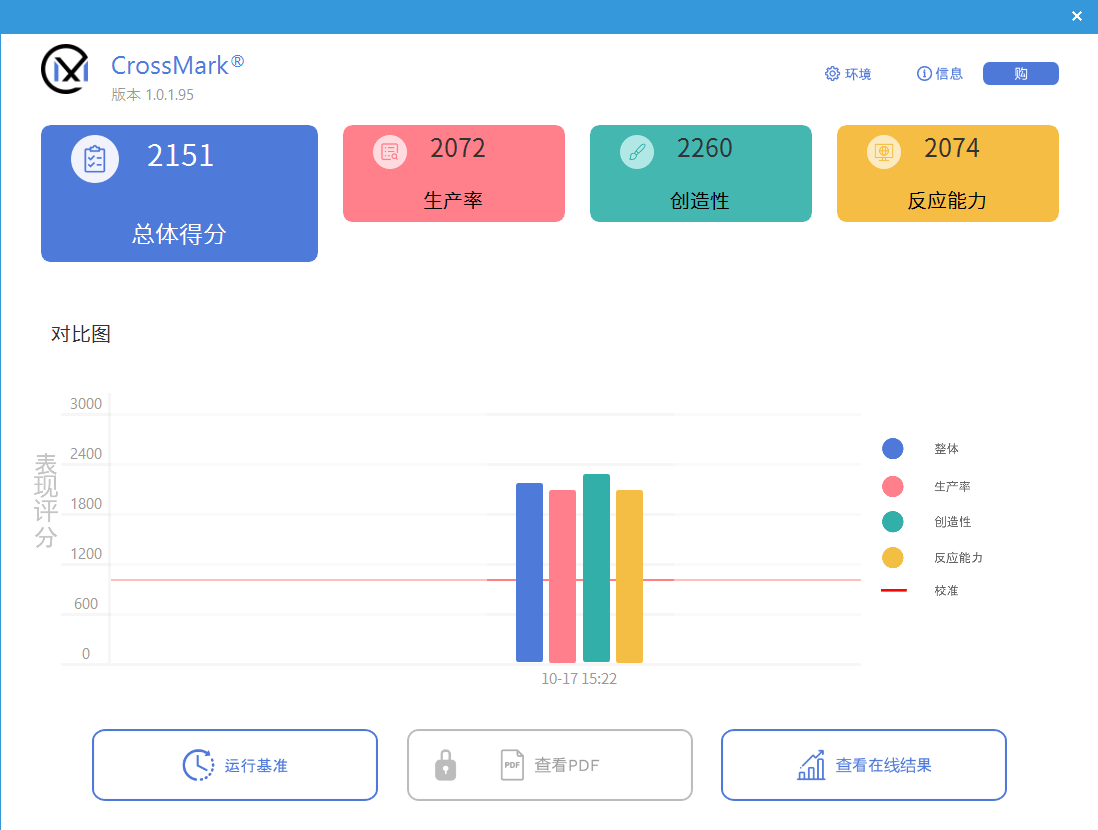
The CPU Profile in 3DMark can evaluate the performance of different threads of the processor. The test results show that the maximum thread is 14685, 16 threads 11855, 8 threads 8652, 4 threads 4686, 2 threads 2377, and single thread 1190.
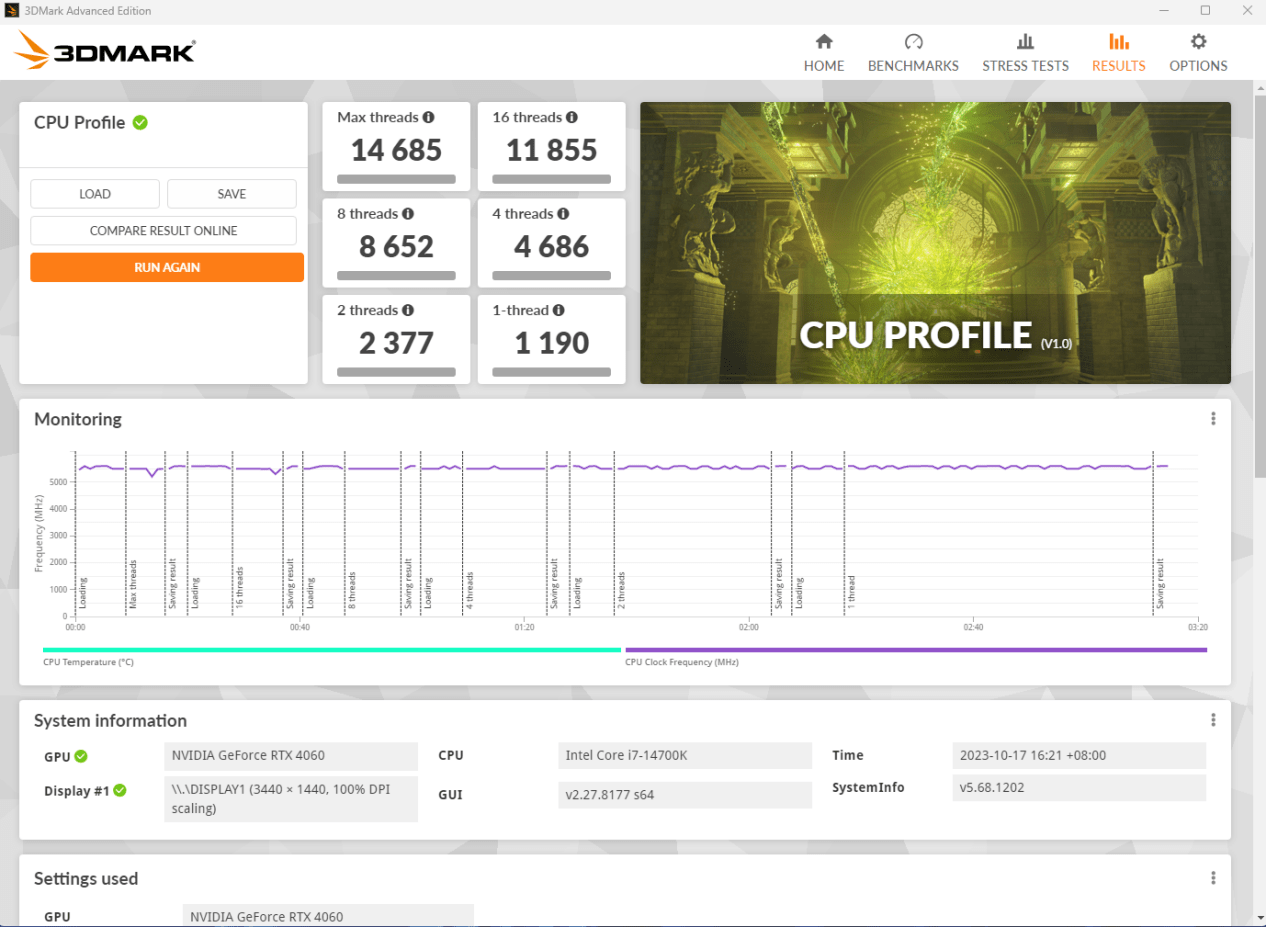
TimeSpy is used to evaluate the 3D graphics performance of your computer. It tests the performance of the graphics card by running a series of graphics rendering and computing tasks, including geometry processing, pixel filling, lighting and physics simulation, etc. The total score is 10975, the display score is 10482, and the CPU score is 14972.
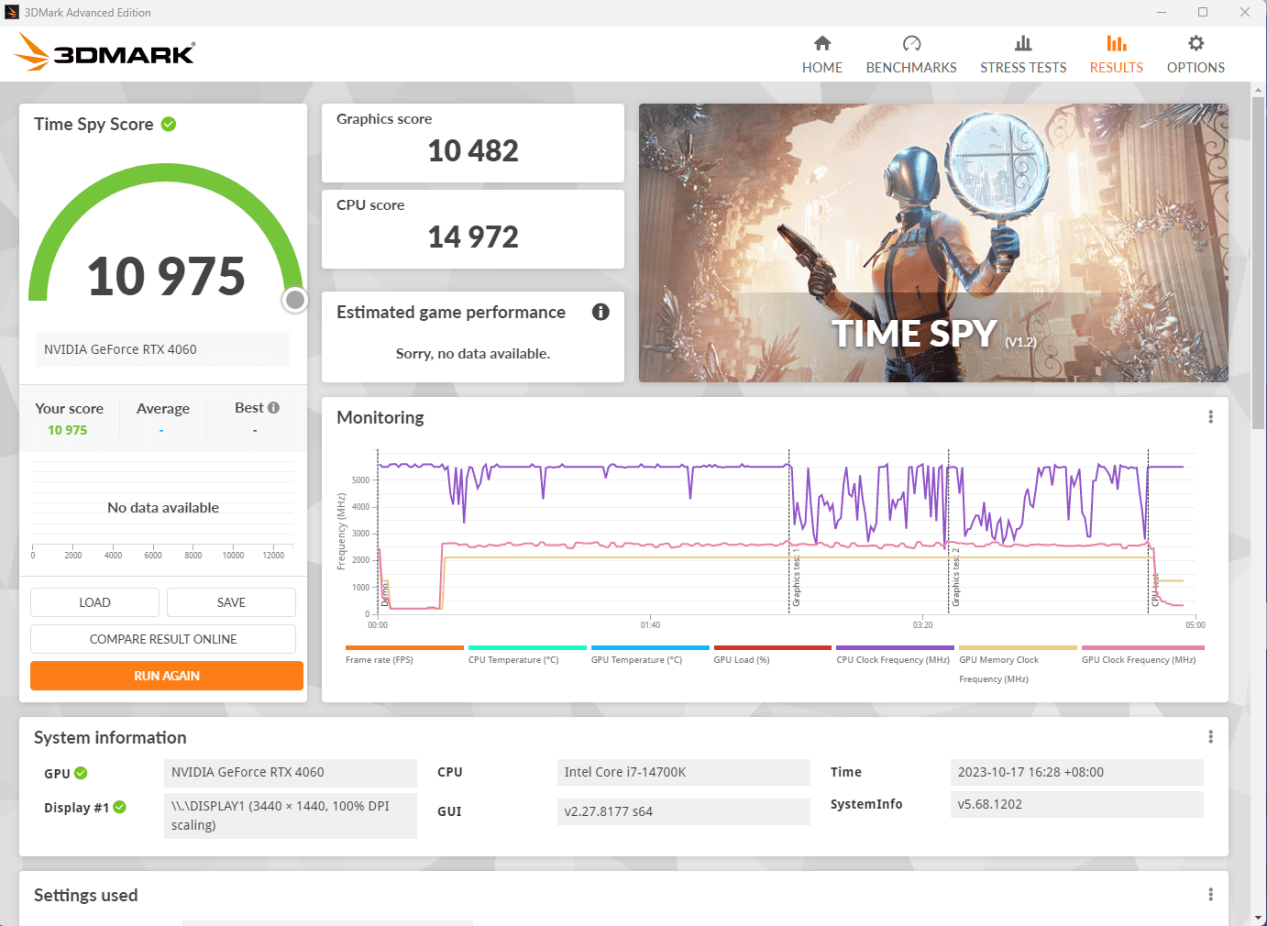
Fire Strike is used to evaluate the graphics processing performance of the computer. The total score reached 27161, the display score was 27942, the physics score was 51399, and the comprehensive score was 14170.
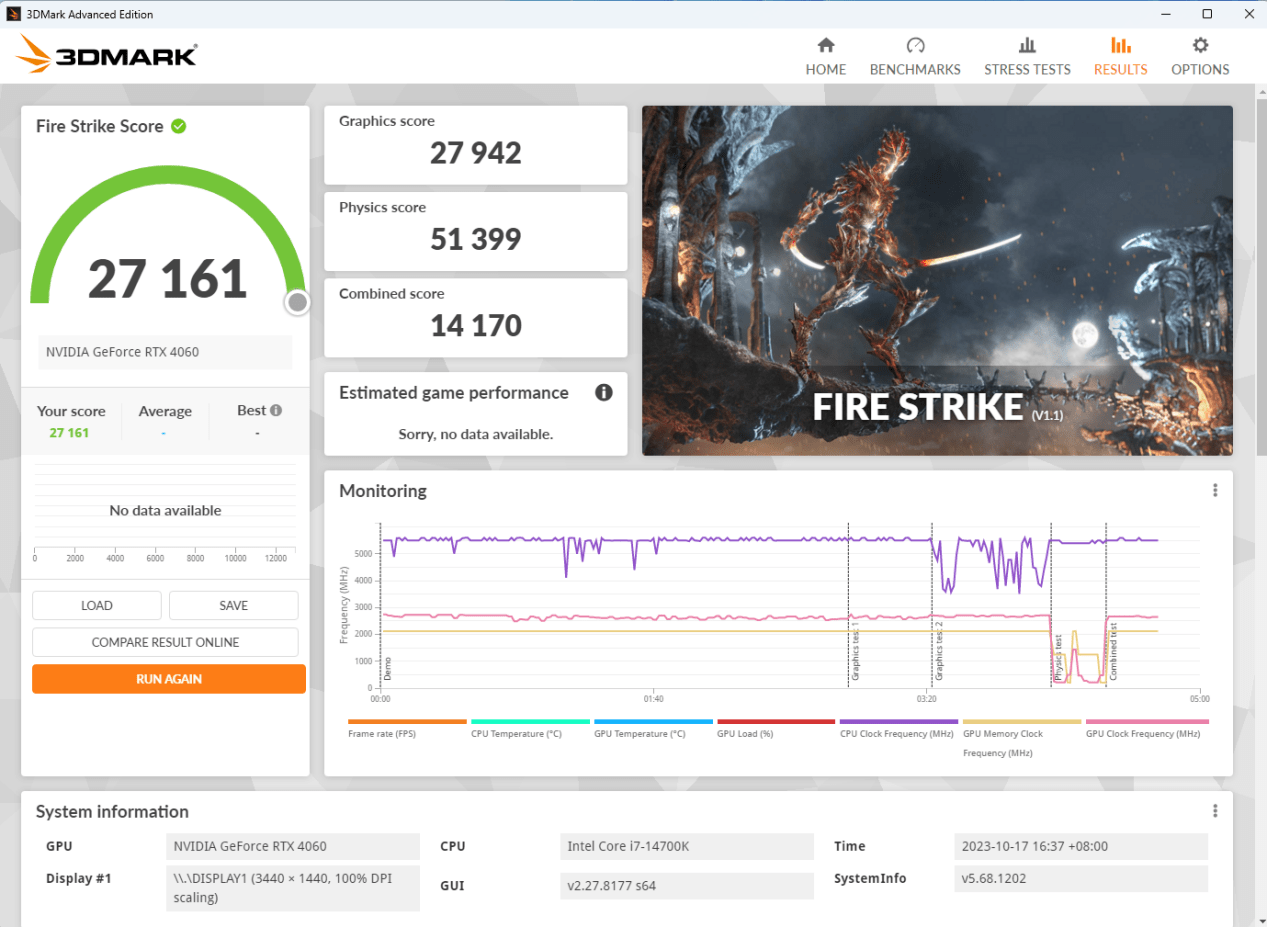
Next is the game test. We played at 2k resolution and 1080p respectively. The image quality was high, Vsync was turned on, FPS limit was turned off, and DLSS was turned on. Played "Rainbow Six", "Metro Exodus", "Everlasting" and "Starry Sky" respectively

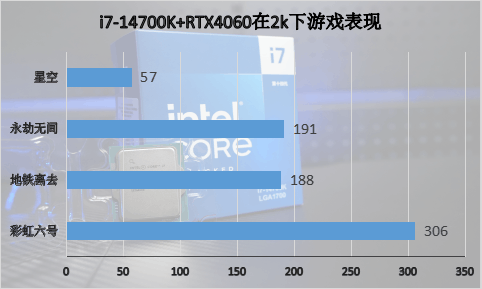
It is worth noting that the graphics card we use is RTX4060, so the data this time is still somewhat general. "Rainbow Six" and "Metro Exodus" have very high frame rates after turning on the application optimizer, and competitive fighting games like "Everlasting" can reach nearly 200 frames, so you can imagine how smooth the picture is.
Summarize:
Compared with the previous generation, the 14th generation Intel Core i7-14700K processor has significantly improved single-threading and multi-threading due to its multiple four small cores. In addition to the hardware, Intel has added an application optimizer to the software, further improving game performance. There are also technologies provided for enthusiasts such as wifi7 and Thunderbolt4. The current price is 3,499 yuan.
Products named starting with "Core i" have been with you for 14 years and have also ushered in the end. The next generation will be Core Ultra. At the same time, we are even more looking forward to the next generation in addition to the difference in naming. What surprises it brings in terms of performance.
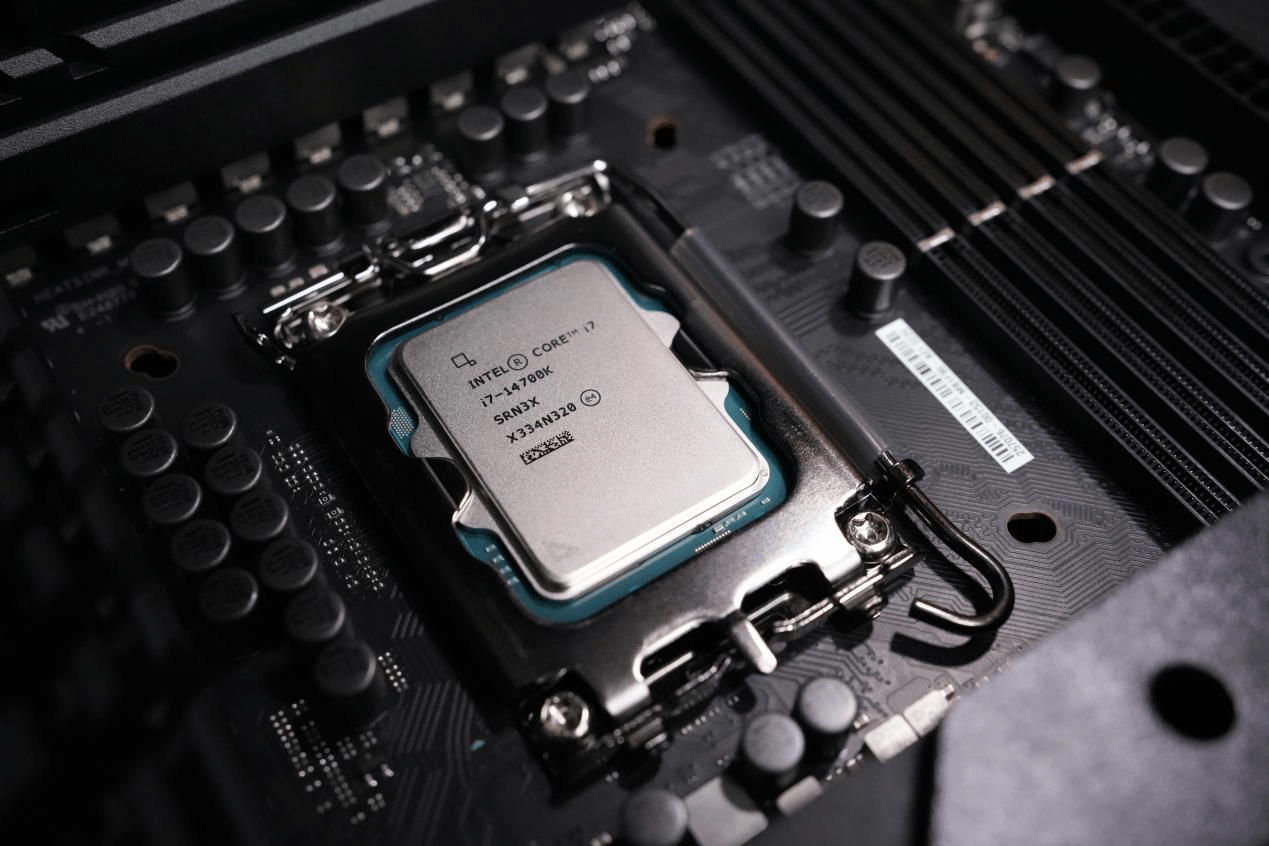
The above is the detailed content of Intel Core 14th generation processor i7-14700K first review: AI overclocking, unmatched performance. For more information, please follow other related articles on the PHP Chinese website!

Hot AI Tools

Undresser.AI Undress
AI-powered app for creating realistic nude photos

AI Clothes Remover
Online AI tool for removing clothes from photos.

Undress AI Tool
Undress images for free

Clothoff.io
AI clothes remover

AI Hentai Generator
Generate AI Hentai for free.

Hot Article

Hot Tools

Notepad++7.3.1
Easy-to-use and free code editor

SublimeText3 Chinese version
Chinese version, very easy to use

Zend Studio 13.0.1
Powerful PHP integrated development environment

Dreamweaver CS6
Visual web development tools

SublimeText3 Mac version
God-level code editing software (SublimeText3)

Hot Topics
 1378
1378
 52
52
 I Tried Vibe Coding with Cursor AI and It's Amazing!
Mar 20, 2025 pm 03:34 PM
I Tried Vibe Coding with Cursor AI and It's Amazing!
Mar 20, 2025 pm 03:34 PM
Vibe coding is reshaping the world of software development by letting us create applications using natural language instead of endless lines of code. Inspired by visionaries like Andrej Karpathy, this innovative approach lets dev
 Top 5 GenAI Launches of February 2025: GPT-4.5, Grok-3 & More!
Mar 22, 2025 am 10:58 AM
Top 5 GenAI Launches of February 2025: GPT-4.5, Grok-3 & More!
Mar 22, 2025 am 10:58 AM
February 2025 has been yet another game-changing month for generative AI, bringing us some of the most anticipated model upgrades and groundbreaking new features. From xAI’s Grok 3 and Anthropic’s Claude 3.7 Sonnet, to OpenAI’s G
 How to Use YOLO v12 for Object Detection?
Mar 22, 2025 am 11:07 AM
How to Use YOLO v12 for Object Detection?
Mar 22, 2025 am 11:07 AM
YOLO (You Only Look Once) has been a leading real-time object detection framework, with each iteration improving upon the previous versions. The latest version YOLO v12 introduces advancements that significantly enhance accuracy
 Best AI Art Generators (Free & Paid) for Creative Projects
Apr 02, 2025 pm 06:10 PM
Best AI Art Generators (Free & Paid) for Creative Projects
Apr 02, 2025 pm 06:10 PM
The article reviews top AI art generators, discussing their features, suitability for creative projects, and value. It highlights Midjourney as the best value for professionals and recommends DALL-E 2 for high-quality, customizable art.
 Is ChatGPT 4 O available?
Mar 28, 2025 pm 05:29 PM
Is ChatGPT 4 O available?
Mar 28, 2025 pm 05:29 PM
ChatGPT 4 is currently available and widely used, demonstrating significant improvements in understanding context and generating coherent responses compared to its predecessors like ChatGPT 3.5. Future developments may include more personalized interactions and real-time data processing capabilities, further enhancing its potential for various applications.
 Which AI is better than ChatGPT?
Mar 18, 2025 pm 06:05 PM
Which AI is better than ChatGPT?
Mar 18, 2025 pm 06:05 PM
The article discusses AI models surpassing ChatGPT, like LaMDA, LLaMA, and Grok, highlighting their advantages in accuracy, understanding, and industry impact.(159 characters)
 How to Use Mistral OCR for Your Next RAG Model
Mar 21, 2025 am 11:11 AM
How to Use Mistral OCR for Your Next RAG Model
Mar 21, 2025 am 11:11 AM
Mistral OCR: Revolutionizing Retrieval-Augmented Generation with Multimodal Document Understanding Retrieval-Augmented Generation (RAG) systems have significantly advanced AI capabilities, enabling access to vast data stores for more informed respons
 Top AI Writing Assistants to Boost Your Content Creation
Apr 02, 2025 pm 06:11 PM
Top AI Writing Assistants to Boost Your Content Creation
Apr 02, 2025 pm 06:11 PM
The article discusses top AI writing assistants like Grammarly, Jasper, Copy.ai, Writesonic, and Rytr, focusing on their unique features for content creation. It argues that Jasper excels in SEO optimization, while AI tools help maintain tone consist



